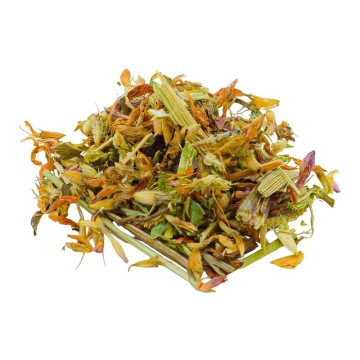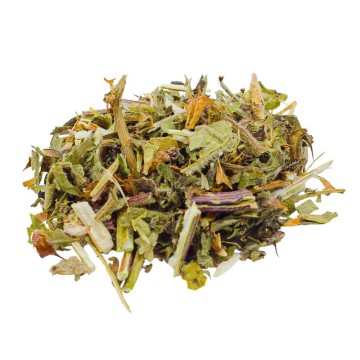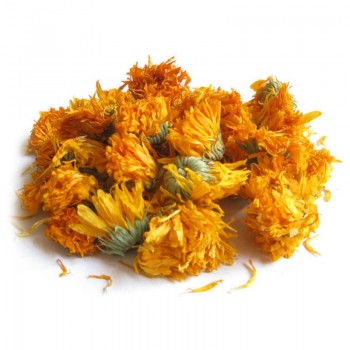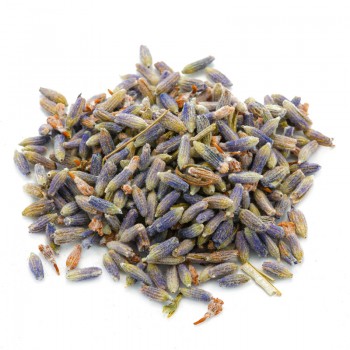Its name derives from the thorny shrub, which in its green and flowery parts gives various beneficial characteristics to our health.
Hawthorn, in fact, is known as a medicinal plant that makes vitamins, tannins and essential oils available, useful for the well-being of the cardiovascular system.
Hawthorn: properties and benefits
Classified as a cardiotonic and anti-arrhythmic herb, hawthorn is best known for its properties that regulate heart rhythm and blood pressure.
The extract of hawthorn leaves and flowers has been used in traditional medicine, and today we know that contains antioxidant phytonutrients, called anthocyanidins and proanthocyanidins .
These are elements that give positive effects such as strengthening the walls of blood vessels. For cardiac well-being, however, it seems to be involved substances also present in the flowers, which help improve blood circulation in the coronary vessels, and can support a regular heart rhythm.
Hawthorn is one of the natural treatments to counteract hypertension, in the sense that it provides a sense of relaxation and opens the blood vessels associated with the heart. In this way it creates conditions for the heart not to strain too much, and blood pressure to stabilize.
Opening the vessels improves the blood flow in the heart, and consequently the circulation (oxygen) to the organs and muscles.
The ingredients of hawthorn contained in leaves and flowers in herbal tea can also be used to combat states of anxiety. Hawthorn effectively helps with major symptoms such as chest tightness and heart palpitations. In addition, hawthorn calms the nervous system and has an antispasmodic capacity.
Thanks to its powerful antioxidants, this herb helps relieve symptoms related to the menstrual cycle, in particular to reduce anxiety and promote menstrual flow. Furthermore, for women's well-being, a hawthorn tea is recommended for palpitations in menopause.
Hawthorn leaves and flowers have also been used in the past to overcome digestive problems, such as tapeworms and intestinal irritations.
Hawthorn flowers have historically also been used for sore throats and as protection of the immune system, since the vitamin C of hawthorn also helps to stimulate the activity of white blood cells .
You may be surprised that the hawthorn plant is also being studied for anti-cholesterol properties. The flavonoids contained in the plant could reduce the overall levels of high cholesterol and triglycerides.
Origins and History of cultivation
Hawthorn comes from the thorny shrub of the Rosaceae family. Botanically it is native to the Northern Hemisphere and grows in temperate climates around the world, including Europe, North America and Asia.
In traditional ancient folk medicine, hawthorn herb has been used to treat a variety of health conditions, from digestive problems to kidney stones, and particularly cardiovascular conditions.
Hawthorn leaves and flowers have been used in the past to treat heart failure, hypertension and cardiac arrhythmias.
This plant has been important to many cultures, from European since Roman times, to Native Americans and Chinese to support heart health.
The ancient Romans had dedicated it to the goddess Flora, among the plants of May, as well as the Celts, and for different cultures the hawthorn had symbolic elements of purity, prosperity and spring vitality .
Each part of the hawthorn is used in herbal medicine: leaf, root, berry and flower.
Plant and flowers
Hawthorn plants have several varieties (crataegus oxyacantha, crataegus monogyna, or crataegus laevigata), but they are always thorny shrubs, small trees of the rose family - Rosaceae.
It grows in temperate climates around the world, with small, bright green leaves. The flowers can be pink, red or white, with red or black berries growing on the trees.
Some varieties are used as ornamental plants and hedges, although over the centuries the hawthorn plant has been used in traditional oriental and western medicine.
Nutritional values of Hawthorn flowers and leaves
Hawthorn contains excellent quantities of flavonoids (oligomeric proanthocyanidins) with a high antioxidant content.
Other natural compounds found in hawthorn are: quercetin, choline, acetylcholine, caffeic acid, chlorogenic acid, triterpenes (ursolic acid), phenolic acids, acantholic acid and flavonoids such as hyperoside and vixetine.
There are also amines important for the nervous system (choline, noradrenaline, dopamine, serotonin).
How to consume Hawthorn flowers and leaves as an herbal tea and in the kitchen
For a good infusion of Hawthorn flowers and leaves Herbal tea cut, it is advisable to use for a cup (250 ml), about 3-5 grams with water at 100 ° C. Leave to infuse for 5 to 7 minutes, before drinking the herbal tea.
Hawthorn: side effects and contraindications
Mainly, the intake of hawthorn is not indicated for pregnant or breastfeeding women .
In addition, hawthorn is not recommended for anyone with a known allergy to plants of the rose family.
For those suffering from heart disease, it is important to use hawthorn only under medical supervision.
Among the side effects, hawthorn in excessive doses could cause nausea, sweating, fatigue, low blood pressure and symptoms such as dizziness.
Consult your doctor before using hawthorn if you are taking medications related to hypertension, ACE inhibitors, digitalis (cardiotonic) medications, cardiac glycoside medications, or nitrate.











 No reward points for this product.
No reward points for this product.












![infuso relax [Natura d'Oriente]](https://www.naturadoriente.com/3555-home_default/infused-relaxation.jpg)



